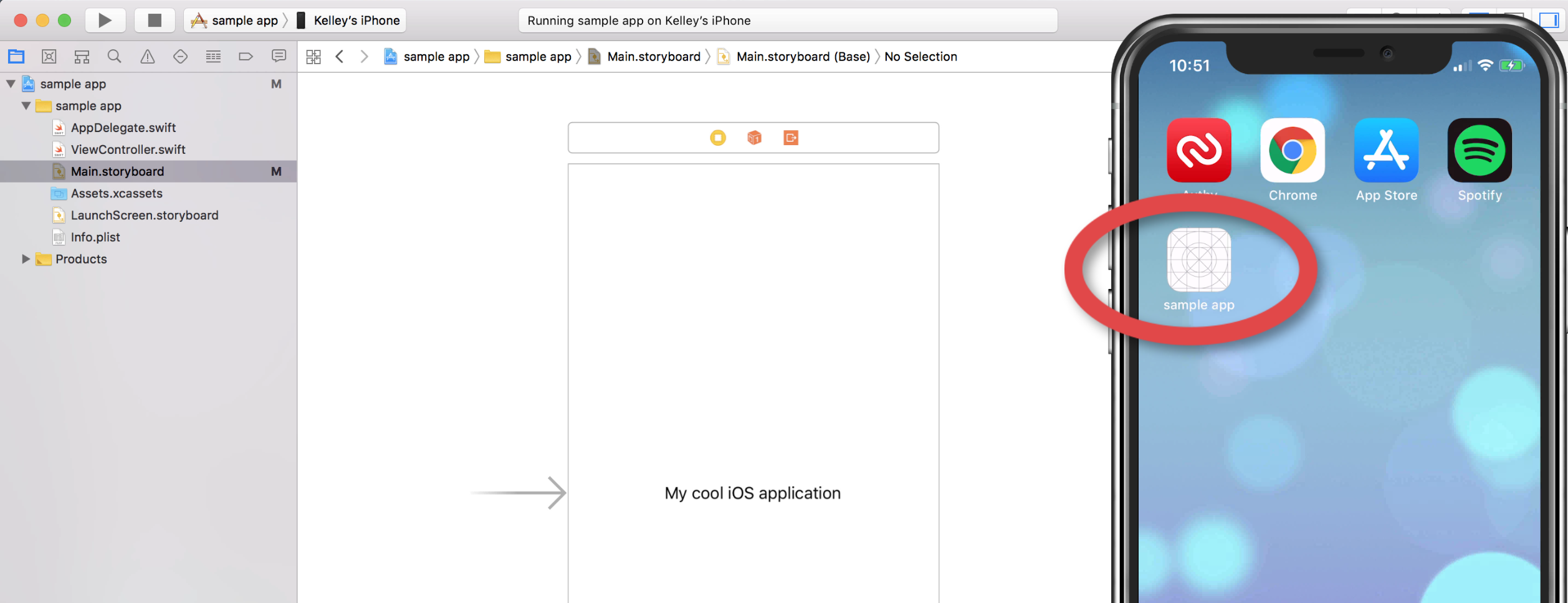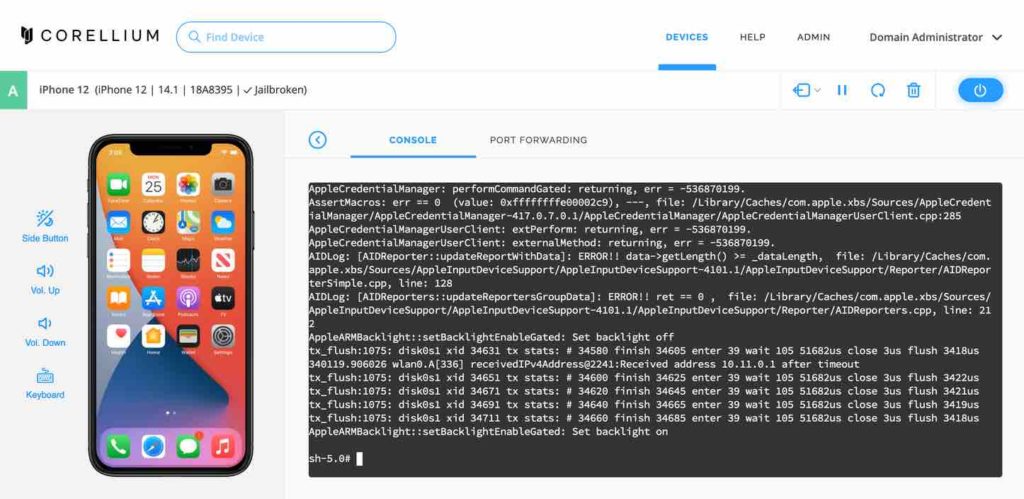Darling is a translation layer that lets you run macOS software on Linux
Fast
Darling runs macOS software directly without using a hardware emulator.
Free
Like Linux, Darling is free and open-source software.
It is developed openly on GitHub and distributed under the GNU GPL license version 3.Compatible
Darling implements a complete Darwin environment. Mach, dyld, launchd — everything you'd expect.
Easy to use
Darling does most of the setup for you. Sit back and enjoy using your favorite software.
Native
We aim to fully integrate apps running under Darling into the Linux desktop experience by making them look, feel and behave just like native Linux apps.

Yes, it’s completely possible. Assuming your VM is set up, open up the Mac App Store. Install Xcode from the Mac App Store, it’s free, but it’s a big download, so make sure you have something to do while it’s downloading. Open Xcode once. While developing for iOS, the simulator is a great resource. It's a great way of testing the apps without a physical device. Its friendly graphical interface can speed things up and emulate very well many features of real devices. But using the terminal is also a great way to speed things up and the only way to create useful scripts for Continuous Integration servers. Select “iOS Simulator.app” or “Simulator.app” and either drag it into the Dock, Launchpad, or hit Command+L to create an alias. Alternatively, you can grab a pre-made alias in a zip bundle that will open iOS Simulator automatically. Throw that on the desktop or in the Dock for easy access. The remote MacOS machine has multiple versions of Xcode, iOS Simulator(s), and other important software required for testing and debugging your Flutter projects beforehand. You can run your Flutter apps on iOS Simulator to test their performance and also make configuration changes to your Flutter projects in Xcode without owning a Mac yourself.
That sounds a lot like Wine
And it is! Wine lets you run Windows software on Linux, and Darling does the same for macOS software. Another similar project is Anbox, for Android apps.
Does it support GUI apps?
Almost! This took us a lot of time and effort, but we finally have basic experimental support for running simple graphical applications.
Does it violate Apple's EULA?
No! We only directly use those parts of Darwin that are released as fully free software.
Does the name Darling mean anything?
The name Darling is a combination of “Darwin” and “Linux”. Darwin is the core operating system macOS and iOS are based on.
Can I run Darling on Windows using WSL?
With WSL 2, yes! See the documentation for more details.
Do you know about opensource.apple.com, GNUstep, The Cocotron and other projects?
We do, and in fact, Darling is largely based on the original Darwin source code published by Apple. We use The Cocotron as a basis for our Cocoa implementation, along with the Apportable Foundation and various bits of GNUstep.
Do you have plans for supporting iOS apps?
Yes, in the long run, we'd like to be able to run iOS apps on ARM devices (like most Android phones). A significant challenge here would be to write our own implementation of UIKit. Come talk to us if you're interested in working on this!
How do I contribute?
Start by reading the documentation and our blog to get familiar with Darling internals. Then, come and join us on GitHub. It's great if you have experience in developing for macOS or iOS, but it's absolutely not required to start contributing.
Matt Cone January 1, 2013 TutorialsMacDeveloper
Web developers know it’s important to test their websites on every web browser and device possible. And with the growing popularity of the iPhone, iPad, and iPod Touch, it’s only natural that they’ll also want to test their websites on all of those devices. But short of stocking up on a bunch of Apple products, how can developers preview their websites in iOS?
Actually, it’s easy. Anybody can do it by installing Apple’s iOS simulator on their Mac for free. This functional demo, complete with the mobile Safari web browser, allows you to preview your website or web application in iOS. It looks exactly the same as it does on an iPhone, iPad, or iPod Touch.
Emulate Iphone On Mac
There are limitations to the simulator. You can’t install apps from the App Store in the simulator, so forget about playing Need for Speed: Most Wanted. And many of the apps that come preinstalled on iOS devices are not available in the simulator. Here’s the bottom line: This stripped-down simulator is great for testing websites, but not much else.
Installing the iOS Simulator on Your Mac
Online Ios Simulator
Ready to get started? The first step is downloading Xcode and installing the iOS simulator on your Mac. Here’s how to install the iOS simulator on your Mac:
Download and install Xcode from the Mac App Store. It’s free!
Right click on the Xcode icon in the Applications folder and select Show Package Contents, as shown below.
Open the iPhone Simulator application. You can find the alias in Contents → Applications, as shown below.
For easy access to the iOS simulator in the future, drag and drop the iOS Simulator alias on to your Desktop or the Applications folder.
The iOS simulator is now installed and running on your Mac, as shown below.
As mentioned earlier, you’ll notice that the simulator is missing a lot of the applications and settings that come with every iOS device.
Rotating the Simulator
Every iOS device has a gyroscope that keeps track of the screen’s orientation. For example, if you turn the device horizontally, iOS will automatically rotate the screen if you’re using an app that supports the feature. The simulator can rotate, too! It can be a useful tool when you’re developing a responsive website or web app.

Here’s how to rotate the simulator:
Open the iOS simulator, if it’s not already open.
Open the Safari app in the simulator.
From the Hardware menu, select Rotate Left or Rotate Right. The simulator will rotate, as shown below.
To rotate the simulator back again, select a rotation option from the Hardware menu.
Simulating Different iOS Devices
What good would an iOS simulator be without the ability to switch between the different dimensions of the iPhone 4, iPhone 5, and the different versions of the iPad? The simulator lets you use them all on your Mac. Here’s how to simulate a different iOS device with the iOS simulator:

- Open the iOS simulator, if it’s not already open.
- From the Hardware menu, select Device, and then select the type of device you want to simulate.
- The simulator window will change to match the dimensions of the device you selected.
To restore the original window with the iPhone case as a border, select iPhone.
Subscribe to our email newsletter


Macos Run Ios Simulator Torrent
Sign up and get Macinstruct's tutorials delivered to your inbox. No spam, promise!